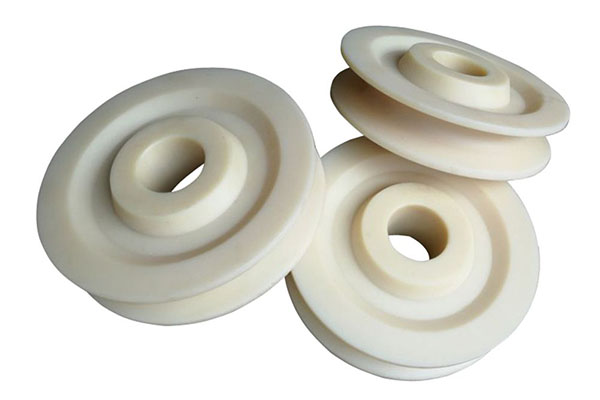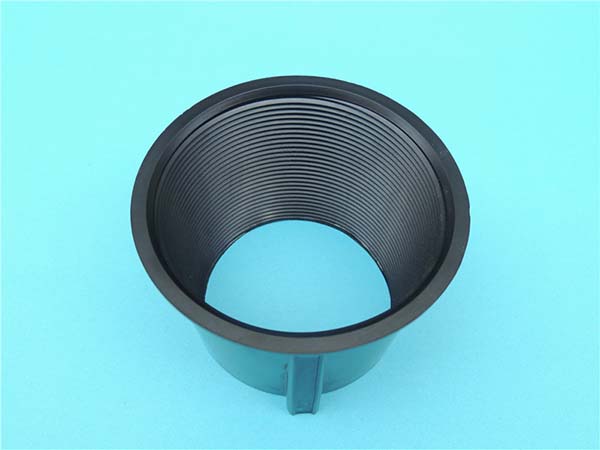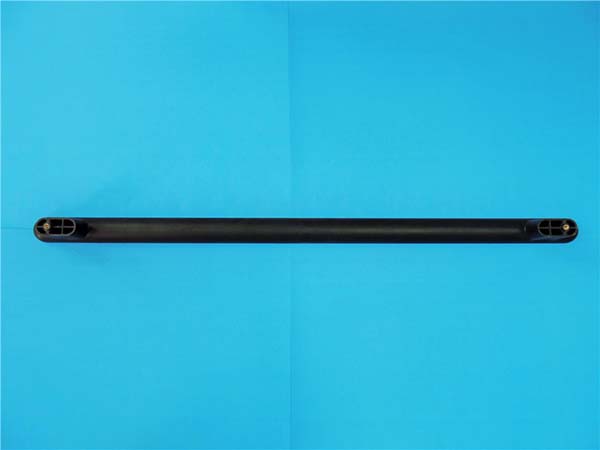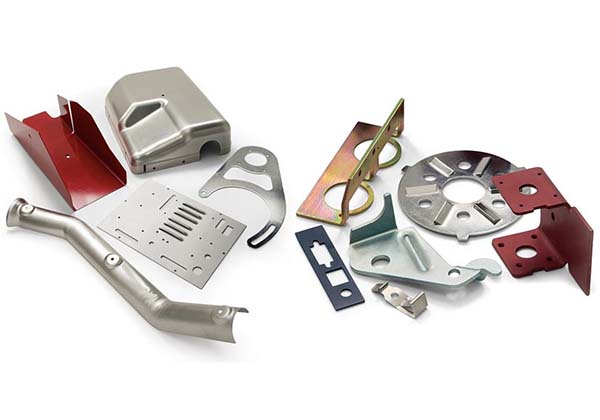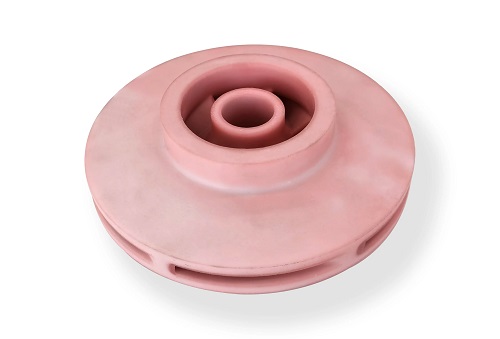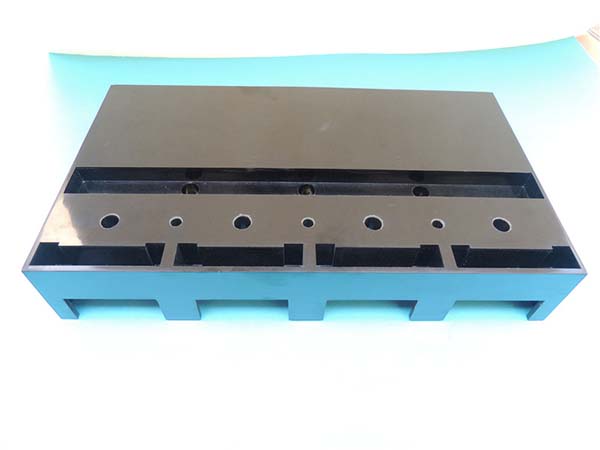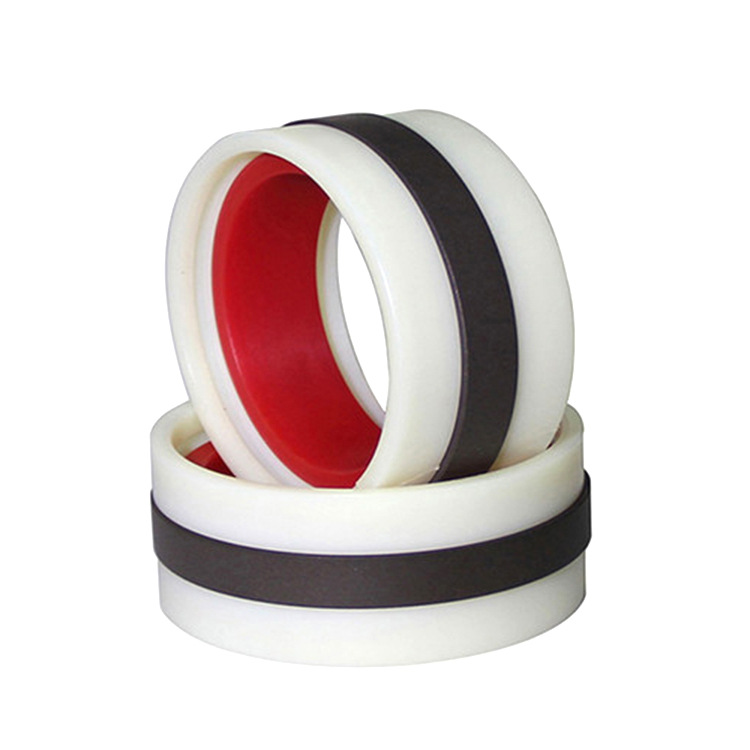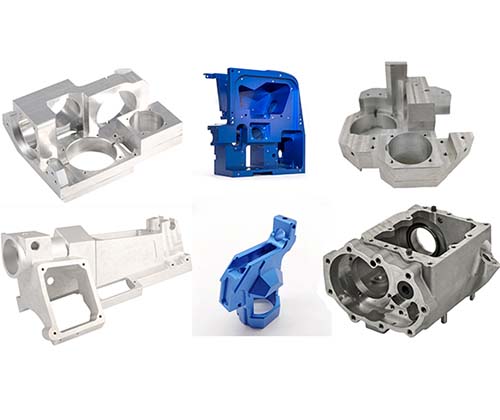1. Understanding 3D Printing Technology
1.1 Definition and Basics
3D printing, also known as additive manufacturing, is a revolutionary technology that creates three - dimensional solid objects from a digital file. Instead of subtracting material as in traditional manufacturing methods like carving or machining, 3D printing builds objects layer by layer. This additive approach allows for the creation of complex geometries that would be extremely difficult or even impossible to achieve through conventional means. For Yigu Technology instance, a toy with internal hollow structures and interlocking parts can be easily designed and printed in one piece using 3D printing, while traditional manufacturing would require multiple components to be assembled.
1.2 Working Principles
The 3D printing process typically involves several key steps:
- Design Modeling: The journey begins with creating a 3D model. This can be done using computer - aided design (CAD) software, where designers can freely draw and manipulate the shape, size, and details of the toy. For example, a designer might use Autodesk Fusion 360 to create a unique action figure with customized poses and accessories. Another option is 3D scanning, which captures the shape of an existing object and converts it into a digital model. This is useful when reproducing a rare or antique toy for modern production.
- Slice Processing: Once the 3D model is ready, it needs to be sliced into thin layers. Specialized slicing software analyzes the model and divides it into hundreds or even thousands of horizontal cross - sections. Each layer represents a thin slice of the final object, and the software generates instructions for the 3D printer on how to deposit the material to build up these layers. The thickness of each layer, which can range from as thin as 0.05 mm to 0.3 mm depending on the desired print quality and the capabilities of the printer, greatly affects the surface finish and detail of the printed toy. Thinner layers result in a smoother surface but take longer to print.
- Printing: The 3D printer then reads the sliced data and starts the printing process. It deposits the chosen material, layer by layer, according to the instructions. As the layers are stacked upon one another, the three - dimensional object gradually takes shape. During this process, factors such as the temperature of the printing nozzle (which can vary from 180°C for PLA plastic to 250°C for ABS plastic in FDM printers), the speed of the print head movement (usually between 30 - 150 mm/s), and the filling density of the internal structure (ranging from 10% - 100%) all play crucial roles in determining the final properties of the printed toy, including its strength, weight, and printing time.
- Post - Processing: After the printing is complete, the printed toy often requires some post - processing. This can include removing any support structures that were added during the printing to hold up overhanging parts. For example, in SLA - printed toys, the support structures are often removed by carefully cutting or dissolving them in a suitable solvent. Sanding may be done to smooth the surface, and painting can be applied to add color and enhance the visual appeal. Some toys might also undergo heat - treatment to improve their mechanical properties.
1.3 Main 3D Printing Technologies in Toy Manufacturing
- Fused Deposition Modeling (FDM): FDM is one of the most popular and accessible 3D printing technologies, especially for hobbyists and small - scale toy production. In FDM printers, a spool of thermoplastic filament, such as Polylactic Acid (PLA) or Acrylonitrile Butadiene Styrene (ABS), is fed into a heated extruder. The extruder melts the filament and then extrudes it through a small nozzle, depositing the molten material layer by layer onto a build platform. FDM printers are relatively affordable, with entry - level models starting from around \(200 - \)500. They are easy to use and maintain, making them a great choice for creating simple toys like small figurines, building blocks, or toy vehicles. However, the surface finish of FDM - printed objects is usually not as smooth as some other technologies, and the layer lines may be visible.
- Stereolithography (SLA): SLA is a more advanced and high - precision 3D printing technology. It uses a vat of liquid photopolymer resin and a UV laser. The laser traces the cross - section of each layer onto the surface of the resin, causing the resin to cure and harden. As the layers are built up, the object is gradually formed. SLA printers can achieve much higher resolutions compared to FDM, with layer thicknesses as low as 0.025 mm. This makes SLA ideal for creating toys with intricate details, such as jewelry - like miniature toys, high - end collectible figurines, or toys with fine - scale textures. The cost of SLA printers is generally higher, with professional models ranging from \(2000 - \)10,000 or more, and the resin materials are also relatively expensive. But the quality of the printed objects often justifies the investment for certain toy manufacturing applications.
- Selective Laser Sintering (SLS): SLS works by using a high - power laser to sinter powdered materials, such as nylon, metal, or ceramic powders. The laser selectively fuses the powder particles together in the shape of each layer, gradually building the object. SLS is well - suited for producing functional toys or toy components that require high strength and durability. For Yigu Technology example, it can be used to create toy gears, joints, or parts for outdoor toys that need to withstand more stress. SLS printers are expensive, often in the tens of thousands of dollars, and the post - processing of SLS - printed parts may be more complex, involving processes like removing excess powder and heat - treating to improve the mechanical properties. However, the ability to work with a wide range of materials and produce strong, functional parts makes SLS a valuable technology in the toy manufacturing industry for specific applications.
- PolyJet Printing: PolyJet printers deposit droplets of liquid photopolymer resin onto a build platform, similar to how an inkjet printer deposits ink. A UV lamp then cures the resin immediately, creating a solid layer. This technology allows for the use of multiple materials and colors in a single print, enabling the creation of highly detailed and colorful toys. For Yigu Technology example, a toy character with different colored body parts and accessories can be printed in one go. PolyJet printers are known for their high - quality surface finish and accurate color reproduction, making them popular for creating visually appealing toys, especially for the consumer market. However, like SLA and SLS, PolyJet printers are relatively expensive, and the cost of materials can also be a factor.
The following Yigu Technology table provides a comparison of these main 3D printing technologies in terms of key characteristics relevant to toy manufacturing:
| 3D Printing Technology | Material Type | Resolution (Typical Layer Thickness) | Cost (Printer and Materials) | Surface Finish | Ideal Toy Applications |
| FDM | Thermoplastic filaments (e.g., PLA, ABS) | 0.1 - 0.3 mm | Low - cost printers (\(200 - \)500) and relatively inexpensive materials | Moderate, visible layer lines | Simple figurines, building blocks, toy vehicles |
| SLA | Liquid photopolymer resin | 0.025 - 0.1 mm | Medium - to - high - cost printers (\(2000 - \)10,000+) and expensive resin | High - quality, smooth surface | Intricate collectible figurines, jewelry - like miniature toys |
| SLS | Powdered materials (e.g., nylon, metal, ceramic) | 0.06 - 0.15 mm | High - cost printers (tens of thousands of dollars) and material costs vary | Good strength, but may require additional post - processing for smooth finish | Functional toy components, outdoor toys, high - strength toys |
| PolyJet | Liquid photopolymer resin | 0.016 - 0.03 mm | High - cost printers and materials | Excellent surface finish, multi - color capabilities | Visually appealing consumer toys with complex color schemes |
3. The Traditional Toy Manufacturing Landscape
3.1 Manufacturing Process
In traditional toy manufacturing, the journey from an idea to a mass - produced toy is a complex and multi - step process.
- Design Conception: The process begins with the design phase. Designers, often using traditional 2D drawing tools or basic 3D modeling software, sketch out the initial concepts for the toy. For Yigu Technology example, when creating a new action figure, they might start with rough pencil sketches on paper, defining the character's pose, facial features, and overall look. These sketches are then refined and translated into more detailed digital models, which are still relatively simple compared to what can be achieved with modern 3D design tools. The focus at this stage is on creating a design that is appealing to the target market, taking into account trends in the toy industry, such as popular characters from movies, TV shows, or video games.
- Mold Making: Once the design is finalized, the next crucial step is mold making. A mold is a negative impression of the toy, which is used to create multiple copies of the toy through injection molding or other molding processes. Mold making is a highly skilled and time - consuming task. First, a prototype of the toy is created, usually using materials like clay or resin. This prototype is then used to create a master model. From the master model, a mold is made, typically from metal such as aluminum or steel. For a small plastic toy, the mold may consist of two halves that fit together. Creating a high - quality mold can take weeks or even months, especially for toys with complex shapes. For example, a mold for a detailed toy castle with multiple turrets, arches, and intricate details can be extremely challenging to produce, and requires precise machining and craftsmanship.
- Mass Production: With the mold in hand, the mass - production phase begins. In injection molding, which is a common method for plastic toy production, molten plastic is injected into the mold under high pressure. The plastic fills the cavities of the mold, taking on the shape of the toy. Once the plastic cools and solidifies, the mold is opened, and the newly formed toy is ejected. This process can be repeated thousands or even millions of times, depending on the popularity and demand for the toy. For larger toys or those made from different materials, other production methods may be used. For instance, stuffed toys are often sewn together from fabric pieces, which are cut according to pre - designed patterns. Each piece is stitched by hand or using industrial sewing machines, and then filled with stuffing material.
3.2 Limitations in Terms of Creativity and Customization
- High Mold Costs and Design Inflexibility: One of the major limitations of traditional toy manufacturing is the high cost associated with mold making. A single mold can cost anywhere from a few thousand dollars to tens of thousands of dollars, depending on its complexity. This high cost means that once a mold is made, it is very difficult and expensive to make design changes. For example, if a toy company wants to modify the shape of a toy's head or add a new accessory after the mold has been created, they would have to go through the entire mold - making process again, which can be prohibitively expensive. This restricts the creativity of designers, as they are often forced to stick with the original design to avoid incurring additional costs.
- Difficulty in Meeting Personalized Needs: Traditional manufacturing methods are not well - suited for producing customized toys. Since mass production is based on the use of molds, it is challenging to create unique toys for individual customers. Each toy produced is identical to the others, as they are all made from the same mold. While some toy companies may offer limited customization options, such as different color variations, these are still relatively basic compared to the level of customization that 3D printing can offer. For example, a child who wants a toy that is a combination of their favorite superhero and a unique animal character would be hard - pressed to find such a customized toy in a traditional toy store. Traditional manufacturing simply cannot economically produce one - of - a - kind toys in small quantities, leaving a large gap in the market for personalized toys.
5. Real - World Examples of 3D - Printed Toys
5.1 Case Study 1: A Popular 3D - Printed Collectible Toy
One remarkable example of a successful 3D - printed collectible toy is the "Mythical Creatures" series. These toys are designed to capture the imagination of collectors with their intricate and fantastical designs. Each creature in the series, such as the "Star - Winged Phoenix" and the "Crystal - Horned Unicorn," features elaborate details that would be extremely challenging to achieve through traditional manufacturing methods.
The design of these toys takes full advantage of 3D printing capabilities. For instance, the "Star - Winged Phoenix" has wings with delicate, feather - like structures that are both thin and complex. These wings are printed in one piece with the body of the toy, eliminating the need for any assembly of separate wing parts as would be the case in traditional manufacturing. The use of SLA 3D printing technology allows for a high - resolution finish, with the fine details of the feathers and the unique patterns on the phoenix's body being clearly visible.
In terms of market response, the "Mythical Creatures" series has been a resounding success. Since its launch two years ago, it has sold over 50,000 units worldwide. The toys are sold both online through the official website and on popular e - commerce platforms, as well as in select specialty toy stores. The target market for these collectible toys is mainly adults aged 18 - 45 who have an interest in fantasy and collectibles. Customer reviews have been overwhelmingly positive, with many collectors praising the unique design, high quality, and the fact that each toy is a limited - edition item. On average, the toys receive a 4.8 - star rating out of 5 on online review platforms, with comments such as "These 3D - printed collectibles are like nothing I've ever seen before. The detail is mind - blowing, and it's a great addition to my collection."
5.2 Case Study 2: Customizable 3D - Printed Educational Toys
Consider the "Build - Your - Own Science Kit" by a company that specializes in 3D - printed educational toys. This kit allows children to create their own scientific models, such as a solar system model, a DNA double - helix model, or a working pulley system. The customization aspect comes in when parents or children can choose the colors, sizes, and some of the features of the models through an online design interface.
For example, when creating the solar system model, a child can select the color of each planet, choose to add or remove rings from Saturn, and even customize the labels on the planets. This interactivity not only makes the learning process more engaging but also helps children understand the concepts better. According to a study conducted by an independent educational research firm, children who used the "Build - Your - Own Science Kit" showed a 30% increase in their understanding of scientific concepts compared to those who used traditional pre - made educational toys.
Parents have also been very supportive of these customizable 3D - printed educational toys. A survey of 500 parents showed that 85% of them believed that the ability to customize the toys enhanced their child's learning experience. Many parents also appreciated the fact that the toys were made from non - toxic, eco - friendly materials, which is a common concern when it comes to children's toys. One parent commented, "My child loves these 3D - printed science kits. It's not just about playing; it's about learning while having fun, and the customization makes it even more special." The "Build - Your - Own Science Kit" has sold over 30,000 units in the past year, with a steadily increasing demand as more parents become aware of the benefits of 3D - printed educational toys.
8. Conclusion
In Yigu Technology summary, 3D printing is undeniably transforming the toy manufacturing industry in multiple profound ways. In terms of design, it has unleashed a new era of creativity. Designers are no longer restricted by the limitations of traditional manufacturing, such as the high cost of mold changes. They can freely experiment with complex geometries, like the intricate wings of the "Star - Winged Phoenix" collectible toy, and bring to life fantastical and unique toy designs that were previously only a dream.
Customization has become a game - changer. With 3D printing, toys can be tailored to individual preferences, whether it's a child's personalized superhero - animal hybrid toy or the customizable educational toys that allow children to choose colors and features for their science models. This level of customization not only enhances the play experience but also meets the growing demand for unique and personalized products in the market.
Cost - efficiency, especially in small - batch production, is another significant advantage. The elimination of expensive mold - making processes in 3D printing means that toy manufacturers can produce small quantities of toys without incurring exorbitant costs. This is particularly beneficial for niche markets, limited - edition toys, and start - up toy companies.
The time - to - market has been significantly reduced. From design to production, 3D printing can complete the process much faster compared to traditional manufacturing, which involves time - consuming mold - making and mass - production set - up. This allows toy companies to quickly respond to market trends and consumer demands, getting their products into the hands of consumers more rapidly.
